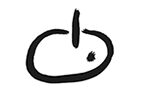Rosangella LEOTE
Pós-doutorada em Media Art; Doutora em Ciências da Comunicação | Post-doctorate in Media Art, PhD in Communication Sciences
Universidade Estadual Paulista “Júlio de Mesquita Filho” (UNESP) | São Paulo State University “Julio de Mesquita Filho” (UNESP), Brazil
Sztuka i zrównoważony rozwój w druku 3D | Art and Sustainability in 3D Printing
BIO
[PL] Rosangella Leote mieszka w São Paulo w Brazylii. Jest artystką multimedialną/badaczem; doktorem habilitowanym sztuki mediów (Universidade Aberta – Lizbona – Portugalia); doktorem nauk o komunikacji (USP); magistrem sztuk pięknych (UNICAMP) i licencjatem sztuki pięknych (UFRGS). Jest dyrektorem Podyplomowego Programu Sztuki w Instytucie Sztuki, Universidade Estadual Paulista Julio de Mesquita Filho / State University of Sao Paulo (UNESP). Jest dyrektorem GIIP – International and Inter-Institutional Group of Research on Art, Science and Technology” [Międzynarodowej i Międzyinstytucjonalnej Grupy Badań nad Sztuką, Nauką i Techniką] zarejestrowanej w CNPq i certyfikowanej przez UNESP (State University of Sao Paulo). Obecnie jej badania dotyczą multisensoryczności i multimodalności opartej na teoriach neuronauki, w tym także technologii upośledzenia dla sztuki. Tworzy performances, rzeźby dźwiękowe i inne prace interaktywne, niektóre z nich w druku 3d. Od powstania SCIArts-Interdisciplinary (1995) jest członkiem tego zespołu. Otrzymała nagrody i posiada liczne publikacje w reprezentowanej przez siebie dziedzinie, jak na przykład książka „ARTECIŹNCIARTE” (UNESP/2015). Wsparcie finansowe badań: CNPq/BR.
[ENG] Rosangella Leote lives in São Paulo, Brazil. She is a multimedia artist/researcher; Posdoctorated in Media Art (Universidade Aberta – Lisbon – Portugal); Phd in Communication Sciences by USP; Master of Arts (UNICAMP) and graduation in Arts (UFRGS). She is director of Postgraduate Program in Arts at Arts Institute, Universidade Estadual Paulista Julio de Mesquita Filho / State University of Sao Paulo (UNESP). Is the director of GIIP – “International and Inter-Institutional Group of Research on Art, Science and Technology” registered in CNPq and certified by UNESP. Currently her research is about multisensoriality, and multimodality based on neuroscience theories, also including handicap technologies for arts. She acts and direct performances, do sound sculptures and other interactive works, some of them in 3d printing. She is part of the SCIArts-Interdisciplinary team, which is a member since its starting (1995). Has awards and several publications in the area as the book “ARTECIÊNCIARTE” (UNESP/ 2015). Research financial support: CNPq/BR.
Abstrakt
[PL] W tym wystąpieniu przedstawię część moich bieżących badań, wspieranych przez CNPq (BR), skupiających się na sztuce i zrównoważonym rozwoju, podkreślając zastosowania plastiku w pracach artystycznych. Użycie plastiku jest obecnie delikatną kwestią na świecie, dlatego w tym projekcie poruszono niektóre rodzaje materiałów, które można wykorzystać w produkcji rzeźb i interaktywnych instalacji drukowanych w całości lub częściowo w 3D. Ma to na celu zademonstrować, że istnieją sposoby drukowania w bioplastikach przy minimalnym wpływie na środowisko.
Artyści pracujący z technologią komputerową mają trudności z drastycznym odejściem od używania produktów przemysłowych, które są szkodliwe dla przyrody. Sprawdziłam, że istnieją pewne możliwości zmniejszenia wyrządzonych Naturze szkód. Istnieją dwa główne rodzaje tworzyw sztucznych: tworzywa termoplastyczne i polimery termoutwardzalne. W obecnej fazie badań w pierwszej kolejności skupiam się na drukowaniu za pomocą PLA (polilaktyd), który jest bioplastikiem. Wykonany jest z roślin, jest biodegradowalny, biokompatybilny i – należąc do klasy termoplastów – w pełni nadający się do recyklingu. Drugim celem jest użycie materiałów, które mają pewną skalę przyjazności, takich jak niektóre rodzaje silikonu i akrylu. Istnieją nowe procesy uprzemysłowienia i degradacji tych materiałów, które mają szansę stać się kompatybilnymi z wytycznymi dotyczącymi zrównoważonego rozwoju. Ten projekt obejmuje moją artystyczną i teoretyczną produkcję w długofalowym projekcie pod nazwą „Viridium”. W tym projekcie wykonuję rzeźby i instalacje interaktywne, które są obiektami półprzezroczystymi i półautonomicznymi, posiadają mechanizmy kontrolowane przez otwartą technologię, zarówno sprzętową, jak i programową. Procedury są transdukcją między twórczością artystyczną – technologią i poetyką – a interdyscyplinarnym pogłębianiem teoretycznym. Przedstawiono podstawy badań z powiązaniami biologii, teorii systemów złożonych (zrównoważony rozwój, biomimetyka, obliczenia naturalne i ekologia) oraz teorią ewolucji. Technologia jest stosowana za koncepcjami i praktykami związanymi z tzw. “maker culture” oraz moim doświadczeniem z drukiem 3d.
[ENG] In this speech I will present a part of my ongoing research, which is supported by CNPq (BR), it focuses on Art and Sustainability, highlighting on the uses of plastic in artistic works. The use of plastic is a delicate issue in the world now, so raised in this project are some types of materials that can be used in the production of sculptures and interactive installations printed totally or partially in 3D. It seeks to demonstrate that there are ways to print in bioplastic, with minimal environmental impact.
Anyway, there are difficulties for artists that work with computer technology, to drastically move away from the use of industrial products that are harmful to nature. I have already verified that there are some options for reducing damage to Nature. There are two main types of plastics: thermoplastics and thermosetting polymers. In the current phase of this investigation, the first focus is printing with PLA (Polylactic Acid), which is a bioplastic. It is made from plants, biodegradable, biocompatible and fully recyclable, being in the class of thermoplastic. The second focus is the use of materials that have a certain scale of friendliness, such as certain types of silicon and acrylic. There are new processes to industrialize and degrade these materials which have prospects of becoming compatible with a sustainable guideline. This project involves my artistic and theoretical production in a long-term project, named “Viridium”. In this project I have been making sculptures and interactive installations that are translucent and semi-autonomous objects, they have mechanisms that are controlled by open technology, both hardware and software. The procedures are a transductive between artistic creation – technology and poetics – and interdisciplinary theoretical deepening. The research grounds are presented with links between Biology, Complex Systems theories (Sustainability, Biomimetics, Natural Computing and Ecology), and the theory of Evolution. The technology is applied from concepts and practices involved in the so-called “maker culture” and my experience with 3d printing.

